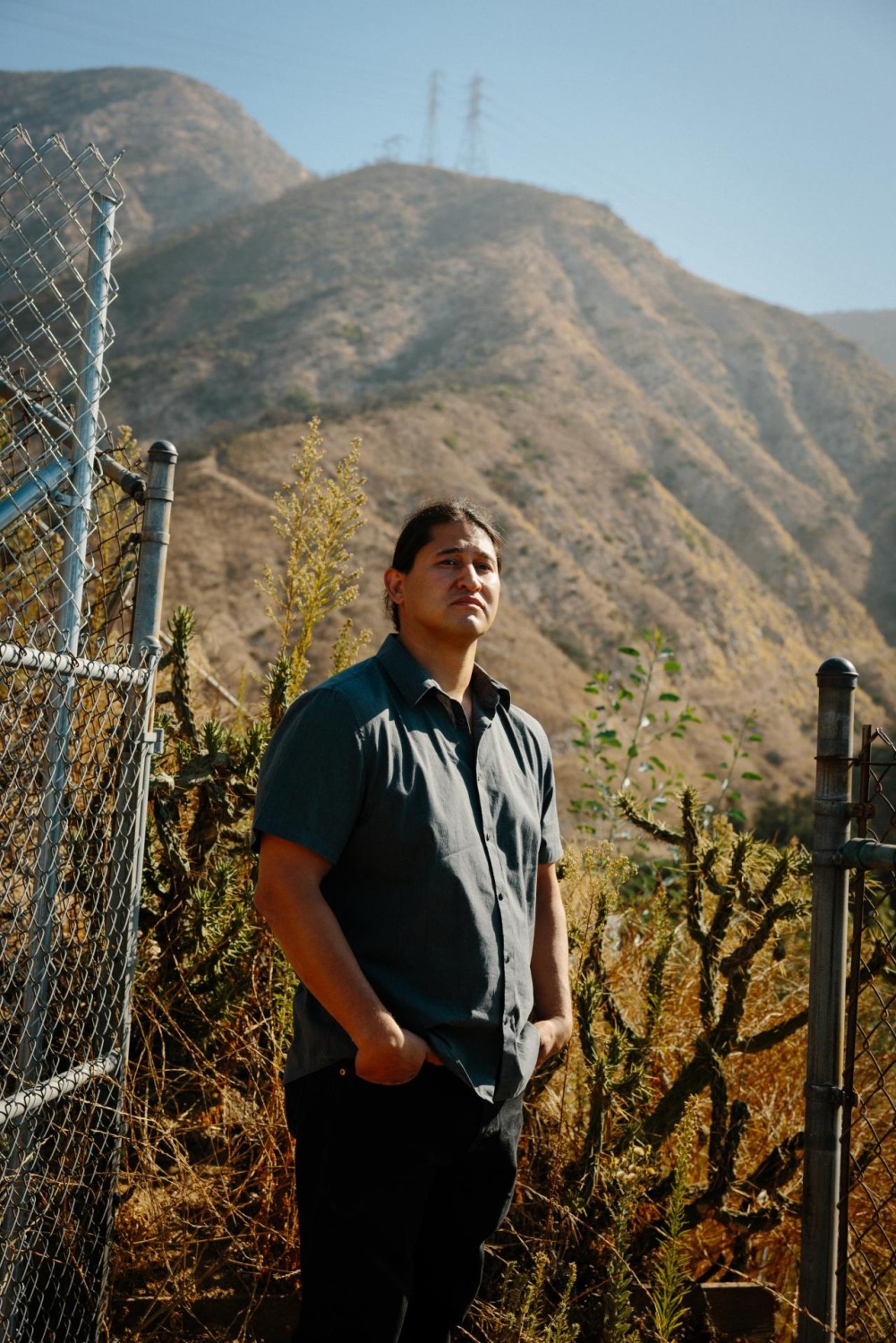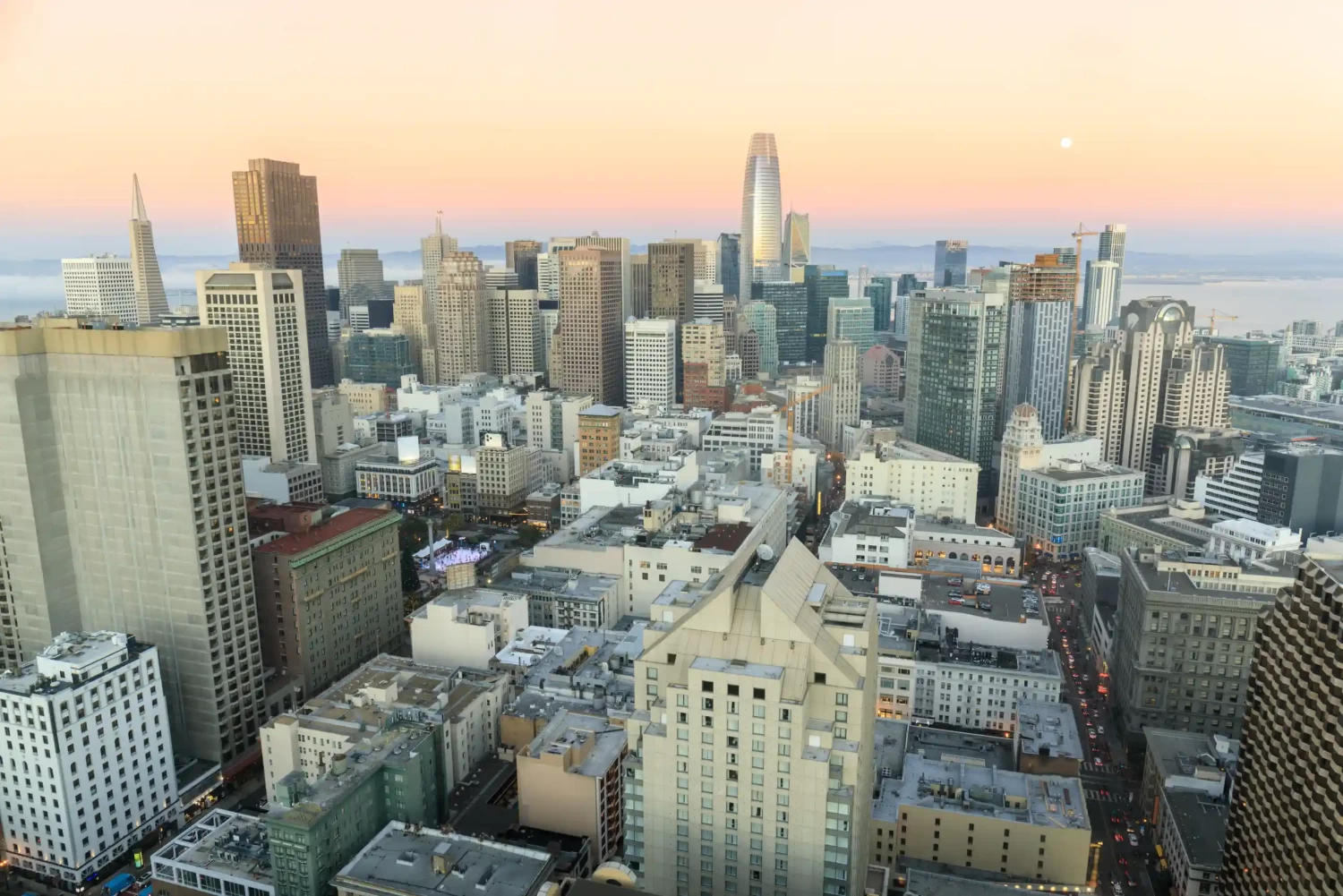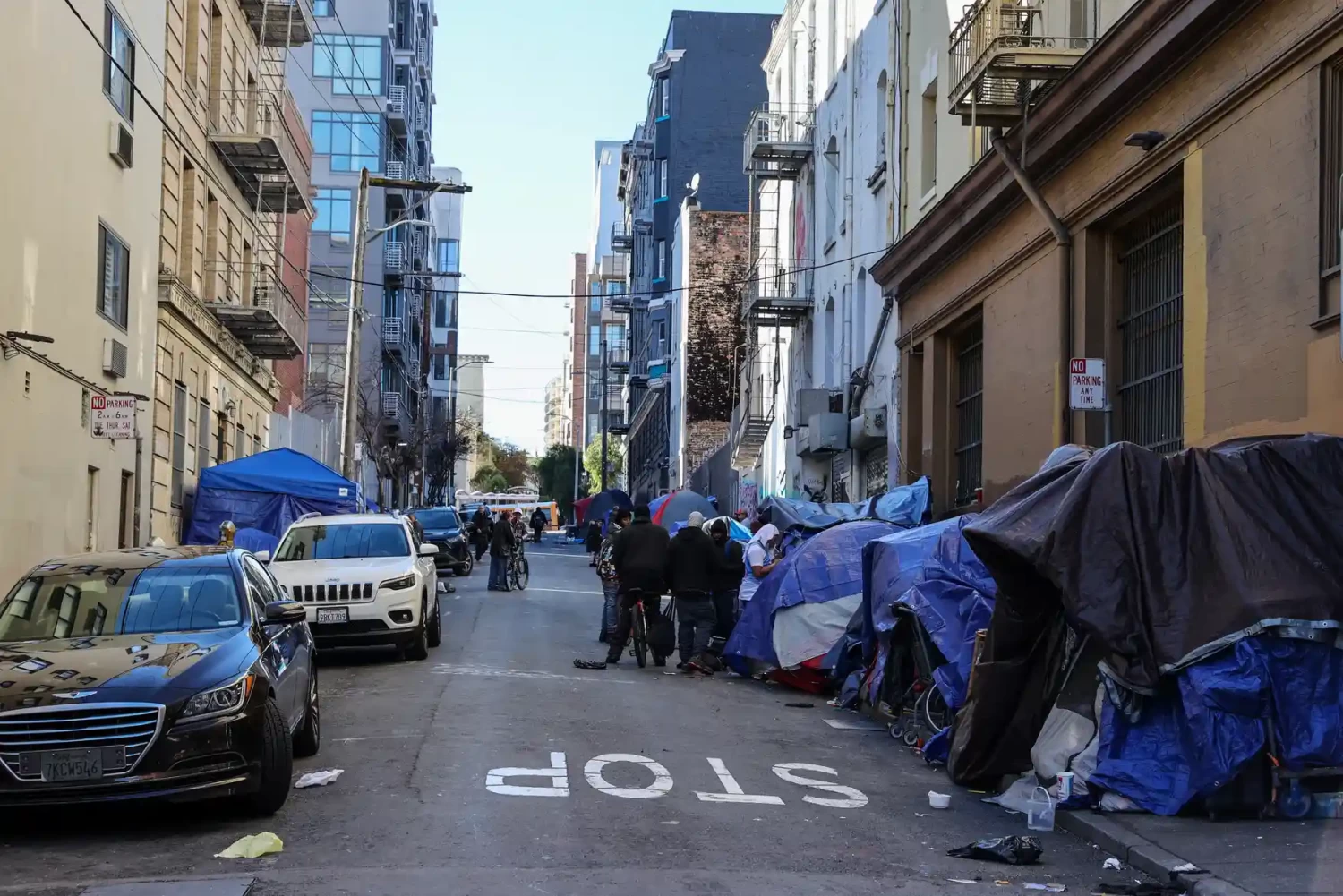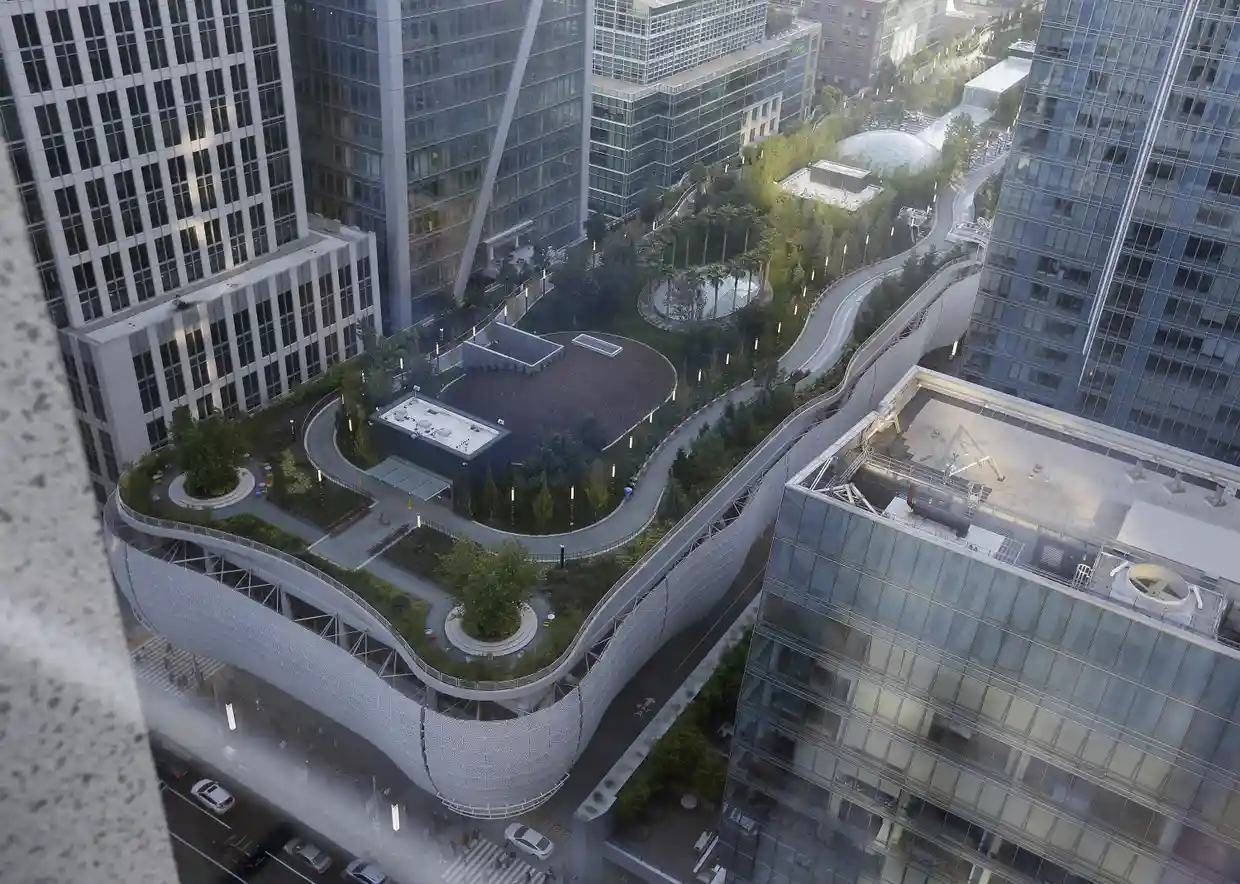
This article is more than
3 year old
Once home to some of the most expensive and sought-after office space in the world, San Francisco today is suffering from one of the most hollowed-out downtowns in North America.
Walking along Market Street, the main thoroughfare, “office space available” and “for sale or lease” signs solicit new businesses. Office vacancy in the first quarter of 2023 ranged between 26.4% and 29.4%, depending on the tally. It’s a steep increase from the historic low vacancy rate of 4% in early 2020. Pinterest, Meta, Reddit, Salesforce, Slack, Uber and Twitter have all vacated or reduced their office space as remote or hybrid work has prevailed.
The emptiness has made some of the city’s other problems – an enduring homelessness emergency, open-air drug use in some neighborhoods and high rates of property crime – seem more visible. And it has sparked speculation that the city is at the verge of a so-called “doom loop”, a spiral down into debt that will force it to cut social and transportation services, which will in turn perpetuate more disinvestment.

San Francisco’s chief economist, Ted Egan, thinks that label is probably premature. “To me, a doom loop is Detroit in the 1970s. There’s nothing you can do to bring auto plants back – every auto plant that closes makes the next one want to close, and a cycle of disinvestment makes people want to disinvest more.”
It’s everything but tech that hasn’t recoveredEconomist Ted Egan
Despite layoffs in past months, the tech economy of the Bay Area is strong, argued Egan, with more tech jobs in the city now than at the start of the pandemic. Unemployment in the city is the second lowest in the state, he said.
But he admitted the city faces significant challenges. “It’s everything but tech that hasn’t recovered,” he said – and without businesses downtown, why would anyone go there?
Tech workers in the Bay Area built the tools for working remotely and then embraced remote work more than any other region in the US, according to the US Census Bureau. For the restaurants, cafes and bars that serviced those workers, and the small businesses and retail that depended on workers’ foot traffic, the consequences were stark.
A study out of the University of California, Berkeley, and the University of Torontocomparing mobile phone data across 62 downtowns in North America found that San Francisco’s recovery is dead last, with only 31% of the activity it had pre-pandemic.
“Before [the pandemic] it was always very busy, but now it’s very slow,” said Lydia Wong, who has been serving to-go comfort food at Yo-Yo’s, a Japanese mom-and-pop lunch shop in the financial district, since 1988. “We can watch Netflix now,” her husband, Joseph Lee, joked.
The Old Ship Saloon, a bar that serves craft beer and pub grub and has been open since 1851, is lucky to still be around. “A lot of bars and restaurants have gone out of business,” said Eric Rogers, a bartender who was working solo through a mini lunch rush.
The Old Ship Saloon was originally converted from a 19th-century sailing ship, the Arkansas, which is still buried in the bar’s foundations. Since the pandemic, the bar’s owners have had to pare down staff in order to make any money. “We just count ourselves lucky that we’re still able to be open. You have to work harder,” said Rogers while pouring drinks, taking orders, serving food and working the cash register.
At the moment, it’s mostly businesses downtown that are feeling the squeeze. But that slowdown is affecting city coffers, which in turn could spark cuts that will affect the entire city. More than 75% of the city’s total GDP is generated downtown, and the businesses there account for nearly half the city’s sales tax revenue and 95% of its business tax revenue. The city is staring down a $780m budget deficit over the coming two years due to rising costs and plummeting business, sales and transfer tax revenues, jeopardizing funding for essential services from public safety and cleaning to transportation.
San Francisco really placed a bet on huge commercial office development, more than anywhere else maybe in the worldCalifornia assembly member Matt Haney
“San Francisco really placed a bet on huge commercial office development, more than anywhere else maybe in the world,” said California assembly member Matt Haney. “They placed the biggest possible bet on something that went bottom-up. They lost. So now we have to adapt and adapt quickly.”
According to Haney, part of the solution lies in downtown’s emptiness.
With high-rises full of empty office space, many artists and low- and middle-income residents priced out, and the most disadvantaged residents of the city housing themselves on its sidewalks, could this vacancy crisis be an opportunity to tackle this emergency in housing and homelessness?
Haney is proposing a state bill that would circumvent some of the notorious red tape that hinders the construction of new housing by fast-tracking the permitting process to convert offices into housing in empty downtowns.
“If we’ve already approved an office building, we shouldn’t treat it as though it’s a new housing development and force it to go from square one with all the hearings, appeals and fees,” said Haney. “It’s in the public interest to get housing in a building that would otherwise be an empty office, and so we’re going to essentially waive everything to make that happen.”
Dean Baker, co-director of the Center for Economic and Policy Research and one of the first economists to sound the alarm on the housing bubble that exploded into the 2008 financial crisis, thinks the move makes sense. “The city is set up to serve a large commuting population. That population is gone and not coming back. It will be a doom loop if the city doesn’t make it a top priority to convert commercial to residential,” he said.
It will be a doom loop if the city doesn’t make it a top priority to convert commercial to residentialDean Baker of the Center for Economic and Policy Research
Gensler, one of the largest architecture firms in the world, has a metric for assessing buildings’ suitability for conversion, and in a report published earlier this year by the San Francisco Bay Area Planning and Urban Research Association, it found that converting downtown offices in San Francisco could physically accommodate around 11,200 housing units. But these conversions are not financially feasible given the current challenges to building in the city, the firm said.
“I think it would make a lot of conversions more possible,” said Holly Arnold, an architect who leads Gensler’s residential practice in the Bay Area, when asked about the proposed bill. A lot of developers stay away from San Francisco because they “just don’t have the stomach or the tolerance to be able to go through the process”.
Egan, the city’s chief economist, is skeptical that office-to-housing conversions are going to change the dynamics of downtown in time to save any small businesses. “It’s not going to be the horse that pulls the cart. It might be the cart. But I tend to think that the return of office workers, one way or the other, is going to be the thing that does it.”
For the city’s property taxes and for property investors, the real crisis will hit in the coming years if office leases start to expire with no one willing to sign on. The office availability rate is currently at 35%. But rents aren’t budging as much as you’d expect in a market with such little demand and so much availability.

“My guess as to why office rents have not fallen more is that the owners are worried about the impact on appraisals for either new loans or sales,” said Dean Baker. “If you cut the rent by 50%, that will quickly be reflected in an appraisal.”
Sitting in Salesforce Park was Chris Carlsson, a local historian and co-director of Shaping San Francisco, which provides walking, biking and bay cruise history tours of the city. He gestured to the soaring towers around.
He thinks their value is about to crater. “The people holding that value will lose it. And they will be sad, and they’ll be jumping off buildings, and they’ll be freaking out,” said Carlsson, who sheds no tears for property investors. “That’s fine. That’s capitalism, right?”
Start taking stuff down. Why have these towers here if there’s no use for them?Chris Carlsson of Shaping San Francisco
“What does a de-worked downtown look like?” Carlsson mused. He thinks converting as many buildings to residences is one answer. But there’s another option. “Deconstruction is a possibility,” he said. “Start taking stuff down. Why have these towers here if there’s no use for them?
“Maybe there will end up being waterslides in there,” he added, only half joking. “Five stories of waterslides and amusement parks. Why not make giant pinball arcades?”
Some 175 years ago, there was a gold rush that brought hundreds of ships from all over the world, down the road from where Salesforce Park is now located. Prospectors dreaming of riches couldn’t wait to anchor in San Francisco Bay before jumping ship, hundreds of which jammed the bay.
Some entrepreneurial folks found ways of staking claim to prime real estate by running ships aground in the shallows of the bay. There are dozens of ships that make up the foundations of downtown San Francisco. Some folks will no doubt find a way to strike gold if and when this city’s commercial office market collapses too.
Everywhere you go in the city, ruins of a former economy and culture now thrive in a completely new incarnation. A navy shipyard is repurposed as studios for hundreds of artists; an armory becomes an adult movie studio and then an event space; a church becomes a space for a roller skating disco party; the old federal penitentiary on Alcatraz island is one of the city’s most popular tourist destinations; a furniture shop becomes Twitter’s HQ.
If the city could convert four blocks of downtown into a surreal rooftop garden, maybe – just maybe – it can transform these downtown offices into something better suited to the future.